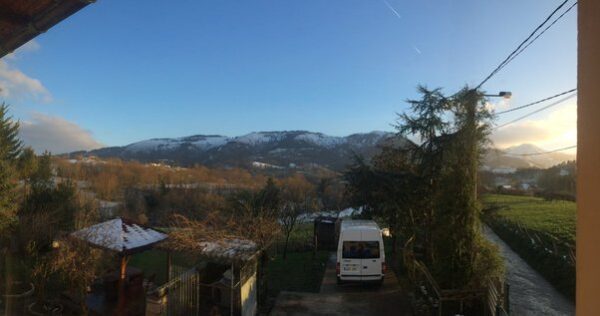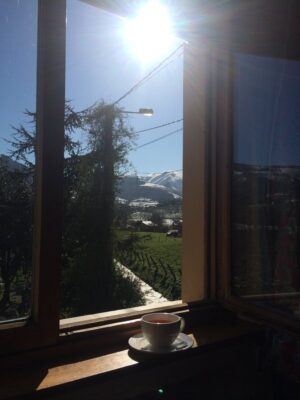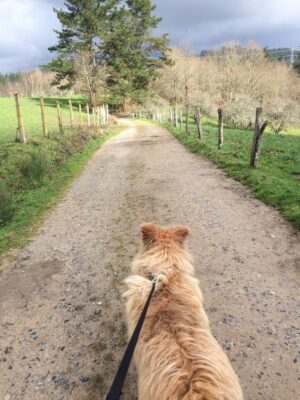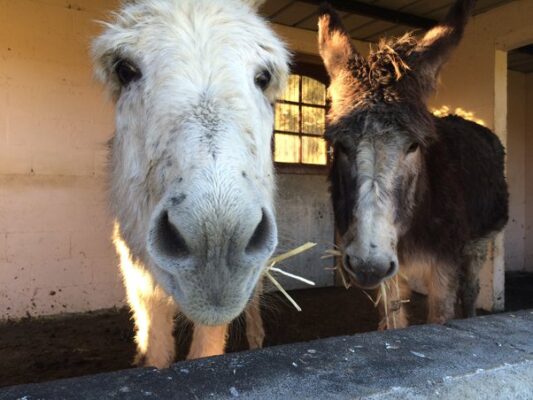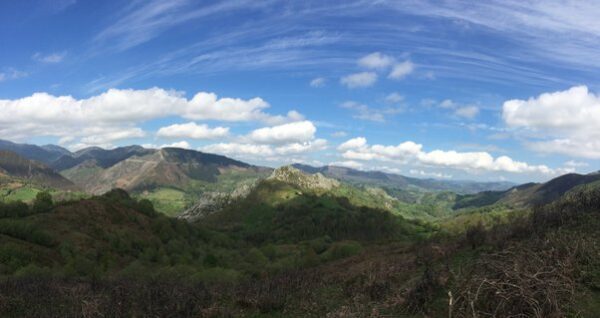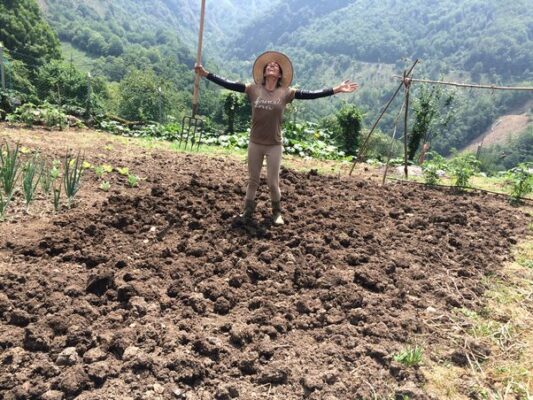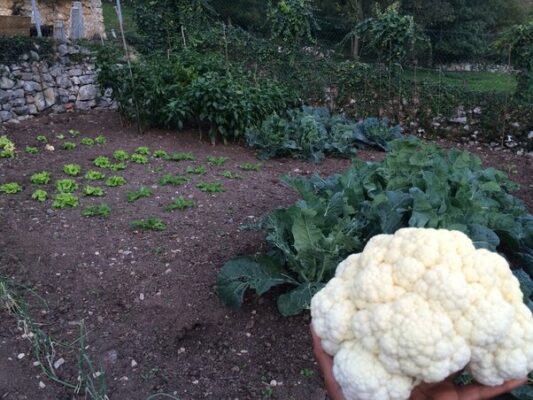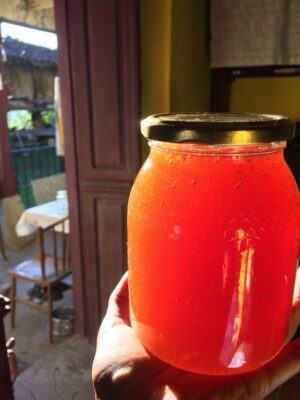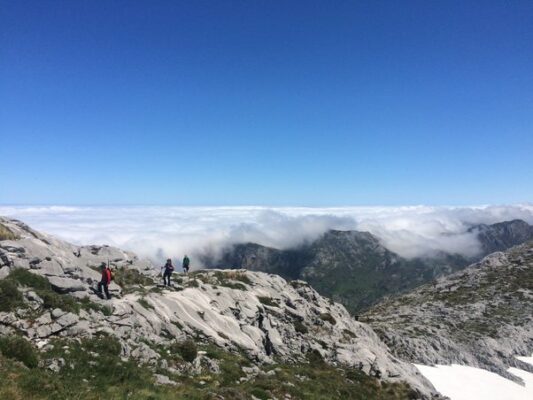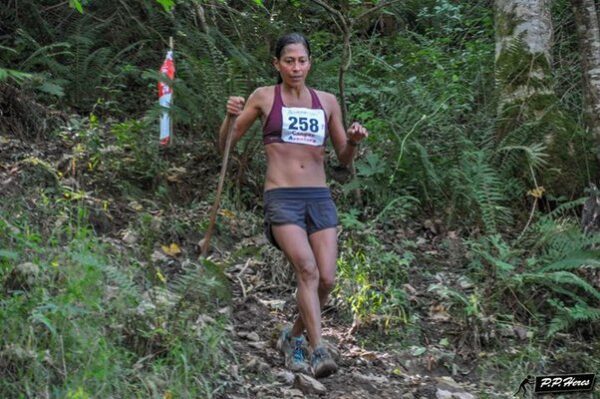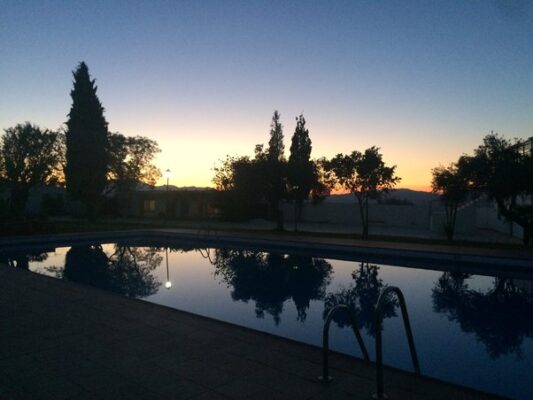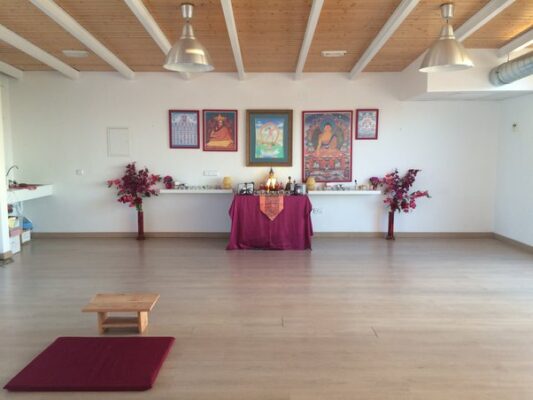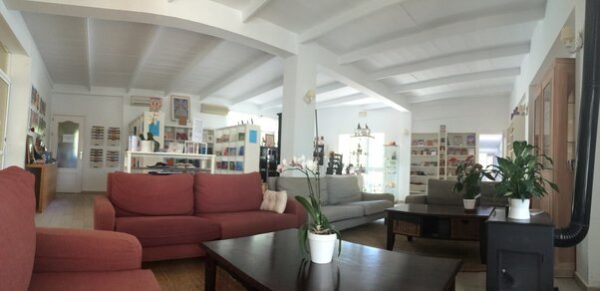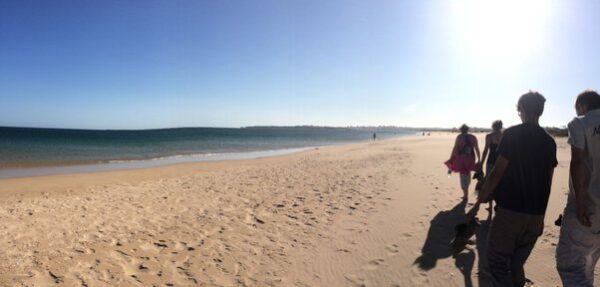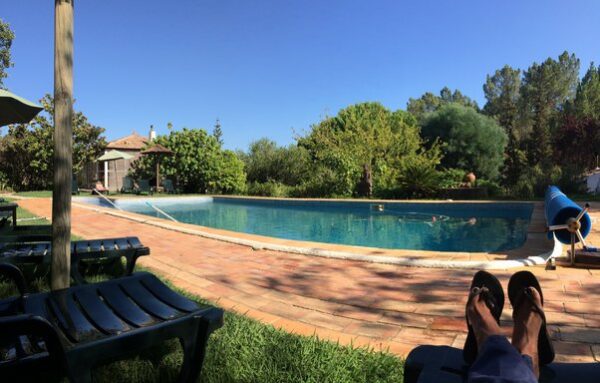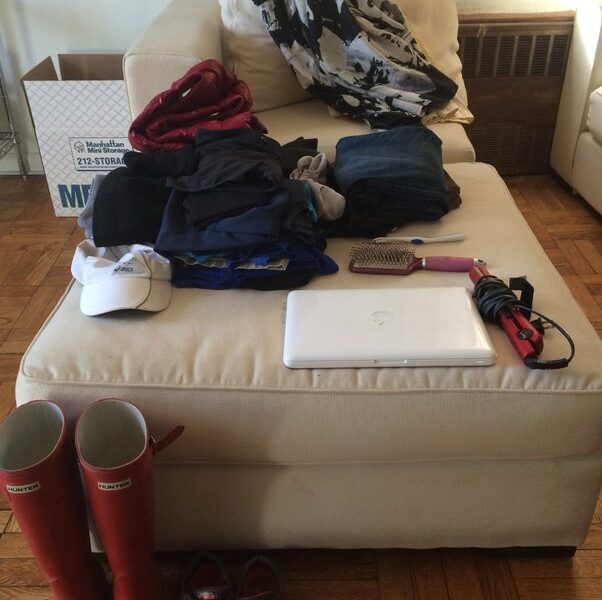Minimalism has been my way of life, involving quitting my job with less than $3000 in my bank account, embarking on the “challenge of reducing possessions to fewer than 100 items,” turning off my cellphone, booking a one-way ticket to Europe, and living self-sufficiently in the mountains of Spain, exchanging necessities for volunteer work.
What did it require? Unraveling much of what I had been taught about pursuing the American Dream.
When I first set foot in Spain in February 2015, I volunteered for five hours a day at an animal shelter in exchange for three meals a day.

And a free room with wifi.

My daily routine included:
8:00 am – Feeding the dogs
8:15 am – Breakfast
9:00 am – Cleaning the apartment or the first dog walk

10:00 am – Apartment rearrangement and cleaning or second dog walk
11:00 am – Scooping poop or heading out for the third walk
12:00 pm – Fourth walk
1:00 pm – Lunch
1:30 pm to 5:00 pm – Free time
5:00 pm – Feeding the donkeys

5:30 pm – Feeding all the dogs
6:15 pm – Dinner preparation
7:30 pm – Dinner
Living deep in the forest where the dogs roamed freely, playing in streams, and chasing sticks, it felt like living the life of a 12-year-old. Friends suggested keeping a detailed diary of my experiences, but I wanted nothing more than to live “as is” without documenting anything further.

For two months, I barely interacted with humans, spending my days alongside animals and nature. It was a fantastic detox for someone accustomed to life in New York.
After the animal sanctuary, I spent several months working five hours a day on an organic farm in the mountains of Asturias.

Given a bare piece of land, by the time I left, it had turned into an impressive garden with 13 types of vegetables planted.

I spread manure, tilled soil, planted seeds, weeded. Besides the cultivated vegetables (tomatoes, strawberries, potatoes, onions, bell peppers, cucumbers, butternut squash, pumpkins, zucchinis, lettuce, escarole, cauliflower, cabbage), there were pear, apple, cherry, walnut, hazelnut, and fig trees, so we mainly ate from the garden, hardly buying anything.

There was no waste on the farm. Papers were burned nightly, organic waste turned into compost, and plastics or glass were reused or recycled. I never saw a trash bag on their property (laughs). We also harvested raw honey.

Located halfway up a mountain, the farm allowed daily hikes with the dogs to famous trails like Camino Real, Picos de Europa, and Aneto Trail.

I also had time to train for the Lagos de Covadonga Extreme Marathon and placed 15th in the women’s category.

Later, I spent two weeks at a meditation center in Malaga, southern Spain.

My daily schedule involved cleaning rooms as guests checked out.
8-9 am – Breakfast
9 am to 12:30 pm – Work
12:30 pm to 1 pm – Break
1-2 pm – Work
2 pm – Lunch
3-7 pm – Free time
7-9 pm – Dinner (flexible)
I was also invited to daily meditation services.

I had access to a well-stocked library.

In September, I was at the beach in Lagos, Portugal.

At a yoga retreat where I volunteered, I enjoyed beautiful yoga facilities.

Library, pool, jacuzzi, hot tub.

And by the end of December this year, I’ll spend Christmas in northern Spain and then two weeks cat-sitting on a beach in Marbella to ring in the new year.
For me, minimalism isn’t just about not buying unnecessary things but also eliminating what no longer serves me. It was a lifestyle tailored to working.
Letting go of most of my possessions became the key to unlocking new freedoms, but the key was to release them without selling.
Minimalism isn’t for everyone, but once you taste it, it’s hard to go back.
Becoming a minimalist allowed me to participate in adventures I had only dreamed of. Experiencing a stress-free life in a natural community, I doubt I’ll ever return to the rat race.
And if the need to work arises again, it’ll be solely to earn enough money to continue these adventures. Having spent only about $600 in the past 8 months, I think I can manage for a while with my modest $3000 savings.
I hope this is helpful.
Ladakh Minimalism Expedition: Embark on a Mesmerizing Journey Through Orchards and Villages
Embarking on a Pacific Crest Trail Unveiled: Discovering the Path to Inner Peace
What is a Pacific Crest Trail ?
In the hustle and bustle of our modern lives, finding inner peace can sometimes feel like a distant dream. We are constantly bombarded with stress, distractions, and responsibilities that pull us in all directions, leaving us feeling overwhelmed and disconnected from ourselves. But what if I told you that there is a path to inner peace, a Pacific Crest Trail that can help you find serenity amidst the chaos? In this article, we will explore what a Minimalism entails and how it can uncover the path to inner peace.
A Minimalism is a personal voyage of self-discovery and growth, where we consciously seek to cultivate inner peace and serenity. It is a deliberate choice to embark on a path that allows us to find solace within ourselves, regardless of external circumstances. This journey involves exploring various practices and techniques that can help us connect with our inner selves, find balance, and achieve a state of tranquility. It is about slowing down, being present, and finding harmony in our thoughts, emotions, and actions.
The importance of inner peace
Inner peace is not just a lofty ideal or a luxury Aconcagua Summit; it is a fundamental need for our overall well-being and happiness. When we lack inner peace, we become more susceptible to stress, anxiety, and other negative emotions that can take a toll on our mental and physical health Aconcagua Summit. Inner peace, on the other hand, is like an anchor that keeps us grounded and resilient in the face of challenges. It allows us to navigate through life’s ups and downs with grace and equanimity.
Moreover, inner peace is not just beneficial for ourselves; it also has a positive ripple effect on those around us. When we are at peace within ourselves, we radiate a calm and positive energy that can inspire and uplift others. Our relationships become more harmonious, and our interactions become more compassionate and understanding. Inner peace is, therefore, not a selfish pursuit but a gift that we can offer to ourselves and the world.
The benefits of embarking on a Minimalism
Embarking on a Minimalism can bring forth a multitude of benefits that extend beyond just inner peace. As we delve deeper into our journey, we begin to develop a heightened self-awareness, gaining a clearer understanding of our thoughts, emotions, and patterns of behavior. This self-awareness allows us to make conscious choices and break free from negative habits and conditioning that no longer serve us.
Additionally, a Minimalism helps us cultivate resilience and emotional intelligence. It equips us with the tools and techniques to navigate through life’s challenges with grace and ease. We become more adaptable and less reactive to external circumstances, allowing us to maintain our inner equilibrium even in the midst of chaos.
Moreover, a Minimalism fosters personal growth and self-acceptance. As we connect with our inner selves, we begin to uncover our true passions, values, and purpose in life. We gain the clarity and confidence to pursue our dreams and live authentically. This journey also enables us to embrace our imperfections and love ourselves unconditionally, fostering a deep sense of self-worth and fulfillment.
Exploring different paths to inner peace Minimalism
There are many paths that can lead us to inner peace, and it is important to find the ones that resonate with us personally. One such path is through mindfulness and meditation practices. Mindfulness involves being fully present in the moment, observing our thoughts and emotions without judgment. It helps us cultivate a sense of inner calm and clarity, allowing us to let go of worries about the past or future.
Meditation, on the other hand, is a practice that involves training the mind to focus and redirect our thoughts. It can be as simple as sitting in silence and focusing on our breath or engaging in guided meditation exercises. Regular meditation practice has been proven to reduce stress, improve concentration, and promote emotional well-being.
Another path to inner peace is through connecting with nature. Spending time in nature can have a profound impact on our mental and emotional well-being. It allows us to disconnect from the noise and distractions of daily life and reconnect with the beauty and stillness of the natural world. Whether it’s a hike in the mountains, a walk on the beach, or simply sitting in a park, immersing ourselves in nature can restore our sense of balance and tranquility.
Mindfulness and meditation techniques for inner peace Minimalism
Mindfulness and meditation are powerful tools that can help us cultivate inner peace. Here are a few techniques to incorporate into your daily routine:
-
Body scan meditation: Find a quiet and comfortable space. Close your eyes and bring your attention to different parts of your body, starting from your toes and moving up to your head. Notice any sensations or tension, and consciously release any tension you feel.
-
 Breathing meditation
Breathing meditation: Sit in a comfortable position and focus your attention on your breath. Observe the natural rhythm of your breath without trying to control it. If your mind wanders, gently bring your attention back to your breath.
-
Walking meditation: Take a slow and mindful walk, paying attention to each step and the sensations in your body. Notice the sounds, smells, and sights around you, fully immersing yourself in the present moment.
Remember, the key to mindfulness and meditation is consistency. Set aside a few minutes each day to practice, and gradually increase the duration as you become more comfortable.
Connecting with nature for a Minimalism
Nature has a way of soothing our souls and reconnecting us with our true essence. Here are some ways to connect with nature and enhance your Aconcagua Summit:
-
Go for a hike: Find a nearby trail or park and embark on a hike. Notice the beauty of the natural surroundings, breathe in the fresh air, and let the rhythm of your footsteps guide you into a state of peacefulness Aconcagua Summit.

-
Practice forest bathing: Forest bathing, also known as shinrin-yoku, is a Japanese practice that involves immersing oneself in the healing atmosphere of a forest. Simply spend time in a forested area, engaging all your senses and allowing the sights, sounds, and smells of nature to rejuvenate your spirit.
-
Gardening: If you have access to a garden or even a small balcony, gardening can be a wonderful way to connect with nature. Planting and nurturing plants can be a meditative practice, allowing you to cultivate patience, mindfulness, and a sense of connection to the earth.

Exploring Different Paths to Inner Peace
There are myriad paths to inner peace, and what works for one person may not work for another. It is essential to explore different practices and techniques to find what resonates with us personally. Some people find solace in mindfulness and meditation, while others may find peace through engaging in creative activities such as painting or writing.
Mindfulness and Meditation Techniques for Inner Peace
Mindfulness and meditation are powerful practices that can lead us towards inner peace. Mindfulness involves paying attention to the present moment without judgment, cultivating a state of non-reactive awareness. By practicing mindfulness, we can train our minds to focus on the present and let go of worries about the past or future. This practice allows us to develop a sense of inner calm and tranquility.

Meditation, on the other hand, involves intentionally focusing our attention and eliminating the stream of thoughts that often clutter our minds. Through meditation, we can cultivate a sense of inner stillness and peace. Regular meditation practice has been shown to reduce stress, improve concentration, and enhance overall well-being.
Connecting with Nature for a Minimalism
Nature has a profound impact on our well-being and can be a powerful catalyst for inner peace. Spending time in nature allows us to disconnect from the demands of modern life and reconnect with our true selves. Whether it’s taking a walk in the forest, sitting by the ocean, or simply gazing at the stars, nature has a way of soothing our souls and reminding us of the beauty and interconnectedness of all things.
Cultivating Gratitude and Positivity on Your Journey
Gratitude and positivity are essential qualities to cultivate on our Aconcagua Summit. By practicing gratitude, we shift our focus from what is lacking in our lives to what we already have. This shift in perspective can bring about a sense of contentment and appreciation for the present moment. Positivity, on the other hand, involves consciously choosing to see the good in every situation and maintaining an optimistic outlook on life. These practices can help us cultivate inner peace and foster a mindset of abundance and joy.
Finding Balance and Harmony in Your Life
Finding balance and harmony is crucial for inner peace. It involves aligning our actions, values, and priorities with our innermost desires and aspirations. This may require making conscious choices to simplify our lives, set healthy boundaries, and prioritize self-care. By finding a balance between work, relationships, and personal well-being, we create a fertile ground for inner peace to flourish.
Cultivating gratitude and positivity on your journey
Gratitude and positivity are essential ingredients for a Aconcagua Summit. By cultivating an attitude of gratitude, we shift our focus from what is lacking in our lives to what we already have. This shift in perspective allows us to appreciate the present moment and find joy in the simple things.
One way to cultivate gratitude is to keep a gratitude journal. Each day, write down three things you are grateful for. They can be as simple as a warm cup of tea in the morning or a kind word from a friend. By consistently practicing gratitude, we train our minds to notice the positive aspects of our lives, which in turn enhances our overall sense of well-being.
In addition to gratitude, nurturing a positive mindset is crucial for inner peace. Positive affirmations, visualization exercises, and surrounding ourselves with uplifting and supportive individuals can help cultivate positivity. Practice self-compassion and treat yourself with kindness and understanding, just as you would a dear friend.
Finding balance and harmony in your life
In our fast-paced and demanding world, finding balance and harmony is essential for our well-being. Here are a few tips to help you find balance on your Aconcagua Summit:
-
 Set boundaries
Set boundaries: Learn to say no to activities and commitments that drain your energy and do not align with your priorities. Prioritize self-care and allocate time for activities that nourish your mind, body, and soul.
-
 Practice self-care
Practice self-care: Self-care is not a luxury; it is a necessity. Make time for activities that bring you joy and relaxation, whether it’s reading a book, taking a bubble bath, or practicing yoga. Remember that self-care looks different for everyone, so find what works best for you.
-
Create a daily routine: Establishing a daily routine can provide a sense of structure and stability. Include activities that promote self-care, mindfulness, and relaxation in your routine. This will help you create a sense of balance and ensure that you prioritize your well-being.
Embracing self-care practices for inner peace
Self-care is a vital aspect of our Aconcagua Summit. It is about nourishing ourselves physically, mentally, and emotionally. Here are some self-care practices to incorporate into your daily life:
-
 Nourish your body
Nourish your body: Eat nutritious meals, stay hydrated, and engage in regular physical activity. Move your body in ways that bring you joy, whether it’s through dancing, hiking, or practicing yoga. Prioritize sleep and create a bedtime routine that promotes restful sleep.
-
Nurture your mind: Engage in activities that stimulate your mind and promote mental well-being. This can include reading books, engaging in creative hobbies, or learning something new. Take breaks from technology and spend time in quiet reflection or journaling.
-
Cultivate emotional well-being: Allow yourself to feel and express your emotions in healthy ways. This can include talking to a trusted friend or therapist, practicing self-compassion, and engaging in activities that bring you joy and relaxation Aconcagua Summit.
Conclusion: Embrace the path to inner peace and embark on your Minimalism
Medical TranscriptionMedical TranscriptionMedical Transcription
xfact on

Embarking on a Minimalism is a profound and transformative experience. It is a commitment to nurturing your inner self, finding balance, and cultivating inner peace. Remember that this journey is unique to you, and there is no right or wrong way to embark on it. Explore different paths, experiment with various practices, and find what resonates with you.
By embracing the path to inner peace, you open yourself up to a world of growth, self-discovery, and serenity. So take the first step today and embark on your Aconcagua Summit. Embrace the beauty of the present moment, cultivate gratitude and positivity, and nurture yourself with self-care. The path to inner peace awaits you.
